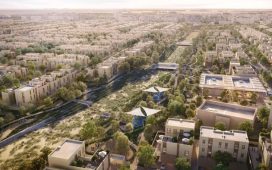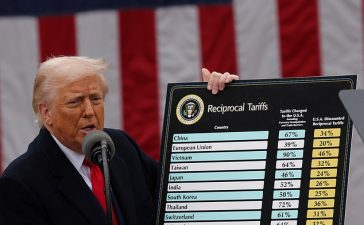Stay informed with free updates
Simply sign up to the Chinese economy myFT Digest — delivered directly to your inbox.
Deep in the heart of Shanghai’s former French Concession, buyers are inspecting an old apartment, taking in the art deco tiling and high-ceiling rooms — theirs for an asking price of Rmb21mn ($2.9mn).
Shanghai’s heritage properties are hardly typical, but all across China, the appeal of so-called second-hand homes appears to be rising in what could herald a seismic shift for a crisis-hit real estate sector dominated for decades by the trade in new-build homes.
With Chinese cities strewn with unfinished housing developments, it is not hard to understand the emerging desire for older homes. A series of property group defaults has meant “end buyers don’t trust developers any more,” said Andrew Lawrence, Asia property analyst at TS Lombard. China is transitioning “from effectively a growth market in housing, which was driven by a speculative credit-fuelled boom, into a much more mature market”.
In developed economies in Europe and North America, existing homes are the norm for buyers. But in China, the biggest building boom in human history has created millions of new homes. In contrast to the historic quarters of Shanghai, much of the country’s housing stock has been built in recent decades. As a result, China’s property sector accounted for nearly a quarter of economic output.
A regulatory crackdown on high leverage in 2021 triggered a liquidity crunch and developers such as Evergrande defaulted. With construction in effect mothballed as developers run out of cash, many buyers, who paid for their new flats in advance, are still waiting to move into their homes.
“The primary market is really shrinking [in terms of] both supply and demand,” said Zerlina Zeng, head of east Asian corporates at research group CreditSights. “I think going forward you will see more vibrant activity coming from the secondary market.”
Second-hand home sales surpassed those of new homes by floor space last year for the first time since private property markets emerged in the 1990s, according to data from the China Real Estate Information Corporation.
“There’s a huge amount of secondary stock out there that’s been held by investors that’s clearly coming back to the market,” said Lawrence.
A Financial Times analysis of CRIC data across 14 major cities for which figures are available, including Beijing, Shenzhen and Nanjing, shows that in 11 of them, second-hand sales volumes were above new home sales in March by floor space.
In the same cities in 2021, sales of new builds were running at almost twice the volume of previously owned homes. The gap between second-hand purchases and those for new homes widened even more in March, the FT analysis shows.
In a sign of the property market’s precarious state, sales of new builds, which represent the basis for core national statistics on the market, are falling sharply. In the first quarter, property sales by floor area fell 19.4 per cent, according to the National Bureau of Statistics.
While local governments approve a price range for new builds — in effect setting a floor in a collapsing market — prices for second-hand property are more open to negotiation.
In March, second-hand home prices in China’s 70 biggest cities fell 5.9 per cent year on year, the most since records began in 2005. In the same month, prices of new homes for the same group of cities fell 2.7 per cent.
In bigger cities such as Beijing, Shanghai, Guangzhou and Shenzhen, where second-hand markets are more established, second-hand prices in February fell 6.3 per cent — the biggest drop since records began in 2011.
“As more people are looking to sell their flats, with more second-hand flats in the market, there is more flexibility for negotiation,” said Andy Lee, chief executive for mainland China at Hong Kong-based broker Centaline.
One recent buyer in Shanghai, who asked to remain anonymous, said he bought a second-hand home because prices had fallen “to a level where I can afford it” and because of mortgage incentives offered by the local government to boost the property market.
More broadly, greater demand for second-hand homes signals bigger changes afoot in the market. The so-called presales model — in which buyers pay for property prior to construction — helped fuel rapid urbanisation, said Zeng at CreditSights.
“I don’t actually think more housing is needed,” she said. “I think the government has realised this problem. That’s why they don’t mind one-third of developers are gone in terms of debt servicing.”
In Shanghai, a visitor to the art deco building said many people in China still had the mindset of “I need to buy my new home”.
But second-hand homes have multiple advantages. Not only have they been completed, but they are also close to services. Some new developments have been thrown up in the hope of services ultimately emerging.
The visitor recalled one friend who bought a house a decade ago because she “firmly believed” line 13 of Shanghai’s subway system would extend to her doorstep — which it eventually did.
“People are probably not as hopeful for that any more,” the visitor said. “People want to buy things they can see.”
This article has been amended to clarify that the apartment is on offer for Rmb21mn ($2.9mn)














